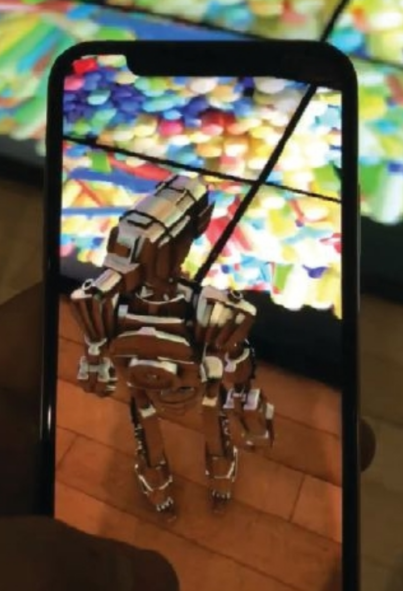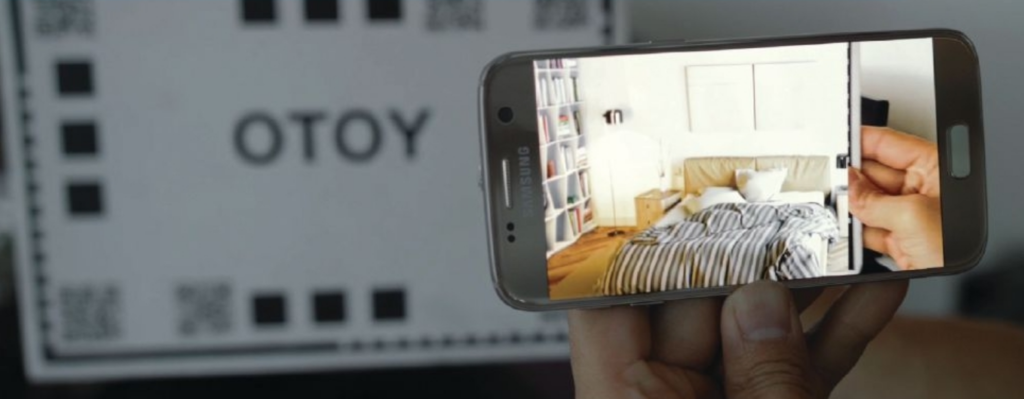Connections

M&E Journal: Holographic Technology: Powering the Next Consumer Revolution
Story Highlights
By Phillip Gara, Director, Strategy and Jayson Kleinman, Communications, OTOY –
Technological accelerants like the rise of 5G networking, GPU ray-tracing hardware and commercial light field displays are converging to usher in a new era of holographic computing. The technology will revolutionize M&E in the same way that the growth of mobile computing has transformed the communications landscape over the past decade.
As holographic media technology moves from R&D to commercial products in 2020 and beyond, the physical and the digital worlds will begin to merge. For brands, the possibilities are remarkable — from immersive location-based retail installations and interactive spatially aware media experiences, to augmented reality gaming and crowdsourced 3D fan art.
The rise of holographic technology will create a new medium to increase engagement with audiences and enable brands to leverage their IP for a new generation of storytelling.
Unlike virtual reality (VR), which has seen slow mainstream adoption, glasses- free augmented reality (AR) is already penetrating the mass market.
This past summer, Niantic’s Pokémon Go crossed 1 billion downloads, showing sustained consumer engagement for spatially rich AR social gaming. And with the next consumer mobile phone refresh cycle, by early 2020 there will be over 1 billion mobile devices in circulation with advanced depth sensing and GPU rendering capabilities, Gartner predicts.
As AR use by consumers spreads, retailers can look to harness mobile AR to create unlimited virtual shelf space in stores — with ARKit depth sensing or custom fiducial markers creating portals to new product visualizations. Fashion brands and manufacturers can integrate AR experiences into their new product lines using increasingly powerful mobile machine vision technology.
 Finally, M&E brands can incorporate AR extensions into their social media and event-based marketing initiatives, opening up new interactive ways to engage with fans.
Finally, M&E brands can incorporate AR extensions into their social media and event-based marketing initiatives, opening up new interactive ways to engage with fans.
We have already seen gaming become the center of gravity in the M&E landscape with the breakout success of Fortnite. This move towards more immersive forms of gaming will only accelerate.
As a result, over the past year, we have rebuilt our technology pipeline to harness powerful new GPU ray-tracing hardware acceleration and low-level cross-platform frameworks like Vulkan by The Khronos Group. Using these technologies, we are able to integrate unbiased cinematic GPU path-traced rendering directly into game engines such as Unreal Engine 4 and Unity, merging gaming and cinematic pipelines into one workflow.
With photorealistic real time 3D rendering available on mobile devices and in game engines, AR experiences will become ever more realistic and compelling. Highend visual effects will also become accessible to hundreds of millions more users, ushering in an era of prosumer CGI production at near parity with traditional Hollywood graphics.
Studios and brands can leverage this democratization by both opening their IP to user-generated 3D art production and by developing new platforms for creativity like open immersive gaming environments.
Holographic displays move beyond AR
With AR as the first mainstream application, more advanced holographic technology will ultimately create a bridge between the virtual and real worlds – setting the stage for a new generation of post-mobile holographic communication. Technologies such as Star Trek’s Holodeck, a fully immersive ultra-realistic shared virtual environment, are rapidly moving from prototypes to mass commercialization.
 At OTOY, we have partnered with holographic display pioneer Light Field Lab in order to bring the first headset-free, photorealistic holographic experiences to the industry.
At OTOY, we have partnered with holographic display pioneer Light Field Lab in order to bring the first headset-free, photorealistic holographic experiences to the industry.
Powered by light field display and rendering technology, holographic billboards — like those seen in Blade Runner 2049 — or immersive location-based theme park attractions will undoubtedly be a part of the M&E landscape of the future.
Free sharing of ideas
As we venture into 2020 and beyond, the expansion of holographic media will ultimately transform content creation and commerce as we know it. The world that science fiction like Star Trek presented was a place where ideas were shared freely through technology. The emergence of this holographic future is predicated on creating a shared media landscape: an open, platform-agnostic space where anyone can freely participate, access, and remix 3D works shared by their peers. Without this openness, it is unlikely that consumers will follow.
Through peer-to-peer networks like the RNDR blockchain compute and 3D marketplace that we are developing, it is possible to incentivize producers and empower consumers to become agents in building this new media ecosystem.
The idea of a shared metaspace where brands extend their IP and fully immerse their fans in stories is no longer a dream. This medium will see the next wave of artists, filmmakers, and innovators emerge. The future of media will be holographic — and, as leaders in the field, we have a unique opportunity to help create this reality.
———————-
Click here to translate this article
Click here to download the complete .PDF version of this article
Click here to download the entire Spring/Summer 2018 M&E Journal









